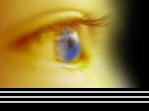Orffyreus worked as an apprentice but a
vague feeling of ‘wanting something’ developed strongly in him. He
had a vague desire to discover something new. Day and night, he was restless
for that. In perfect commune with nature, his soul was hankering to discover some great hidden mystery of Nature. Reason showed
him glimpses of invention but he knew not what exactly it could be! He could
not know how to embark on perpetual motion in a right manner. He did not know how to start! Bessler prayed God to show him
the right path and help him.*
Nephite prophet, Moroni. 7:5-19 says: “... for every thing which inviteth to do good, and to persuade to
believe in Christ, is sent forth by the power and gift of Christ; wherefore ye may know with a perfect knowledge it is of
God. But whatsoever thing persuadeth men to do evil, and believe not in Christ,
and deny him, and serve not God, then ye may know with a perfect knowledge it is of the devil”
Let me say here, Orffyreus’
unconscious mind was always working on perpetual motion. He had strong desire
to invent it but consciously there was no way to begin. He asked God for help.
Then he was looking different visions of nature. One night, with the help of God, he had a strangely invigorating dream*, which gave him some decisive idea to construct
his perpetual motion machine. This dream set him on his perpetual motion journey
and inspired him to continue to engage in the mission with relentless effort. He
concentrated on work again with renewed strength and at last, his efforts were crowned with success. He finally constructed his working invention.
Collins also mentions that Orffyreus made
numerous prior models and had flashes of inspiration* before his “strangely invigorating dream.” Orffyreus went through many failed devices before he was eventually successful. Orffyreus might have understood major portions of how the machine should work. He just stuck with the problem and got help from as many diverse sources of information
as possible.* Bessler was successful only after 10 years
of study and rigorous experiments. He is said to have experimented with no fewer
than 300 different machines until he at last succeeded to invent a perpetual motion machine
His joy was unbounded
when the first machine, about one meter in diameter, began to work. It presented an amazing phenomenon in front of him. The
mechanism consisted of a rotating wheel in which weights moved and balanced against each other along a special path. Orffyreus concealed the entire mechanism by covering the machine with oilcloth. He
was careful not to leave behind any concrete descriptions or drawing of the secret so that no one could know how it worked.
His achievement,
especially as an inventor of perpetual motion machine was most remarkable considering that Orffyreus was not formally educated
as an engineer. The invention was, to a large degree the product of his reflective
thought, his creative potential based on his very extensive working with all sorts of machines present in his time. It was a solitary work with practically no benefit from give and take discussions with his colleagues,
mostly the clock makers and friends having similar interests.
When Orffyreus achieved his goal, he was relieved.
He wanted money for development of his invention. He brooded over securing
a patent for it or selling it to some wealthy man. Meanwhile, as his fortunes
would have it, two wealthy patients came to him for cure. We must recall here
that he was a physician also. With utmost patience, he stopped working on perpetual
motion machines for a while and resumed medical profession again in order
to earn some money to help finance further development. One of his patients who
were having attacks of spasms was the mayor’s daughter Anne Rosin Mauersberg.
She lived in small town of Anhaberg Buchorz. Orffyreus himself wrote that he cured her quickly, by grace of God, and then married her in 1711, when
he would have been around 30. He settled down with her in a small German town
called Gera, and built another small-sized perpetual motion wheel which he then demonstrated to the public.
References:
* See Collins’ book pp. 28, 29, 32, 65, and 141.
* ibid Page: 28, 29, 32, 65, 141
* ibid page. 25,29,30 and 44.

